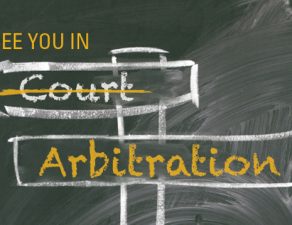

This post first appeared on the Securities Arbitration Alert blog. The blog’s editor-in-chief is George H. Friedman, Chairman of the Board of Directors for Arbitartion Resolution Services, Inc.
The Court in Jane Doe #1 (I.G.) v. Massage Envy Franchising, LLC, 2023 WL 8801517 (Cal. Ct. App. Dec. 20, 2023), enforces an online “clickwrap” agreement containing a predispute arbitration agreement (“PDAA”) with a delegation provision, and rules that the arbitrator is to decide unconscionability issues.
Online PDAA in Massage Scheduling App’s TOS
First, the facts:
“Plaintiff Jane Doe #1 (I.G.) alleges that she was sexually assaulted by a massage therapist at a location franchised by Defendants Massage Envy Franchising, LLC, and ME SPE Franchising, LLC, (collectively, Massage Envy) and operated by Chaoju Investment, LLC.” Next, the issues and contentions: “Contending that Doe accepted an arbitration agreement while using its website to create an online profile for scheduling a massage and again while checking in at the franchised location, Massage Envy moved to compel arbitration.”
Plaintiff’s Consent to TOS …
And the holding:
“Based on the uncontradicted evidence presented in the trial court, Doe expressly assented to Massage Envy’s Terms of Use Agreement when she created a profile on Massage Envy’s website to access its scheduling service and affirmatively indicated her acceptance of the agreement, the terms of which included an arbitration clause. Because the arbitration agreement contains a clear and unmistakable delegation clause, Doe’s unconscionability and scoping arguments are properly directed to the arbitrator. Accordingly, the trial court should have granted the motion to compel arbitration.”
… Manifested by Actions
Last, the Court’s reasoning:
“Here, Doe assented to the Terms of Use Agreement when she created a profile on Massage Envy’s website to use Massage Envy’s appointment booking service. Doe created her profile on a single page. To create a profile, Doe had to click a box manifesting her assent to the Terms of Service Agreement, which were provided by a hyperlink in the text adjacent to the box, which was indicated by a different color and underlining. In short, there was a clear and straightforward process by which Doe, with ready access the full text of the Terms of Use Agreement, expressly manifested her assent.”
(ed: *Seems right, although we’re sometimes surprised to see this outcome from a California court. **See to the same effect: Tamburo v. Hyundai, No. 23-cv-00282, 2024 WL 22230 (N.D. Ill. Jan. 2, 2024)).






